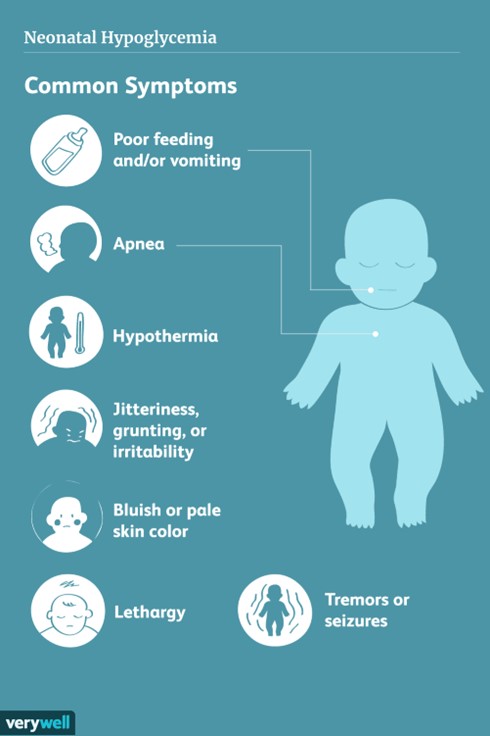Which assessment findings may cause the nurse to suspect a brachial plexus injury?
The newborn has hypotonia
The newborn does not demonstrate the Moro reflex
The newborn cries continually
The newborn has tremors
The Correct Answer is B
Choice A reason:
The newborn has hypotonia. This is not a specific sign of brachial plexus injury, as hypotonia can have many other causes, such as genetic disorders, infections, or brain damage.
Hypotonia is a general term for low muscle tone or weakness, which can affect the whole body or specific parts.
Choice B reason:
The newborn does not demonstrate the Moro reflex. This is a sign of brachial plexus injury, especially if it affects only one arm. The Moro reflex is a startle response that causes the baby to throw out the arms and legs, then curl them in when startled. A brachial plexus injury can impair the nerve function in the shoulder, arm, or hand, leading to decreased movement or sensation in the upper extremity. If the baby does not show the Moro reflex on one side, it may indicate damage to the upper brachial plexus nerves (C5-C7), also known as Erb's palsy.
Choice C reason:
The newborn cries continually. This is not a specific sign of brachial plexus injury, as crying can have many other causes, such as hunger, discomfort, or colic. Crying is a normal way for babies to communicate their needs and feelings. Crying does not necessarily indicate pain from a brachial plexus injury, as infants' nerves behave differently from adults' and they may not experience much pain from this condition.
Choice D reason:
The newborn has tremors. This is not a specific sign of brachial plexus injury, as tremors can have many other causes, such as cold temperature, low blood sugar, or withdrawal from maternal medications. Tremors are involuntary movements of the muscles that can affect the whole body or specific parts. Tremors do not necessarily indicate nerve damage from a brachial plexus injury, as this condition usually causes weakness or paralysis of the affected muscles.
Nursing Test Bank
Naxlex Comprehensive Predictor Exams
Related Questions
Correct Answer is ["A","B","E"]
Explanation

Choice A:
Tremors. This is a sign of hypoglycemia in a newborn because low blood sugar can cause shakiness or jitteriness in the muscles. •
Choice B:
Lethargy. This is a sign of hypoglycemia in a newborn because low blood sugar can cause low energy, poor feeding, or lack of interest in eating.
Choice C:
Hunger. This is not a sign of hypoglycemia in a newborn because low blood sugar can actually reduce the appetite or cause feeding difficulties.
Choice D:
Jaundice. This is not a sign of hypoglycemia in a newborn because jaundice is caused by high levels of bilirubin in the blood, not low levels of glucose.
Choice E:
Weak cry. This is a sign of hypoglycemia in a newborn because low blood sugar can affect the vocal cords and the respiratory system, causing a weak or high-pitched cry.
Correct Answer is A
Explanation
Choice A reason:
Stop breastfeeding. This is the correct answer because newborns and infants with galactosemia cannot metabolize galactose, a sugar found in milk and lactose-containing formulas, including breast milk. Galactose can build up in their blood and cause serious complications such as liver damage, cataracts, brain damage, and even death. Therefore, the therapeutic management for this newborn is to stop breastfeeding and switch to a soy or elemental formula that contains no galactose.
Choice B reason:
Add amino acids to the breast milk. This is incorrect because adding amino acids to breast milk will not prevent the accumulation of galactose in the newborn's blood. Amino acids are the building blocks of proteins, not sugars. Adding amino acids to breast milk will not change its galactose content or help the newborn metabolize it.
Choice C reason:
Substitute a lactose-containing formula for breast milk. This is incorrect because lactose is a disaccharide composed of glucose and galactose. Lactose-containing formulas will also expose the newborn to galactose, which they cannot break down. Lactose-containing formulas should be avoided in newborns and infants with galactosemia.
Choice D reason:
Give the appropriate enzyme along with breast milk. This is incorrect because there is no enzyme therapy available for galactosemia. Galactosemia is caused by a genetic defect in one of the enzymes involved in the breakdown of galactose, such as galactose-1-phosphate uridyltransferase (GALT), galactokinase (GALK), or uridine diphosphate galactose-4-epimerase (GALE). Giving an enzyme along with breast milk will not correct this defect or prevent the harmful effects of galactose accumulation.
Whether you are a student looking to ace your exams or a practicing nurse seeking to enhance your expertise , our nursing education contents will empower you with the confidence and competence to make a difference in the lives of patients and become a respected leader in the healthcare field.
Visit Naxlex, invest in your future and unlock endless possibilities with our unparalleled nursing education contents today
Report Wrong Answer on the Current Question
Do you disagree with the answer? If yes, what is your expected answer? Explain.
Kindly be descriptive with the issue you are facing.
